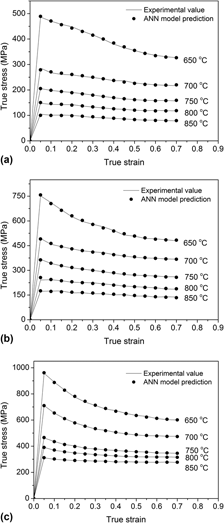Article contents
A comparative study on constitutive equations and artificial neural network model to predict high-temperature deformation behavior in Nitinol 60 shape memory alloy
Published online by Cambridge University Press: 27 May 2015
Abstract

The present study was conducted to predict the hot deformation behavior of the as-forged Nitinol 60 shape memory alloy by using the Arrhenius type, multiple-linear, and artificial neural network (ANN) models. The acquired flow stress data from isothermal hot compression tests in a temperature range of 650–850 °C under strain rate range of 0.01–1 s−1 were used to calculate the material constants for establishing the corresponding constitutive equations. Furthermore, a comparative study has been made on the capability of the aforementioned models to predict the high-temperature deformation behavior by comparing the prediction relative errors, average absolute relative error, and correlation coefficient. The results show that multiple-linear model predicts the flow behavior more accurately than the Arrhenius type model. The ANN model is much more efficient and has a better prediction power for the as-forged Nitinol 60 alloy than both the Arrhenius type and multiple-linear models.
Keywords
- Type
- Articles
- Information
- Copyright
- Copyright © Materials Research Society 2015
References
REFERENCES
- 6
- Cited by




